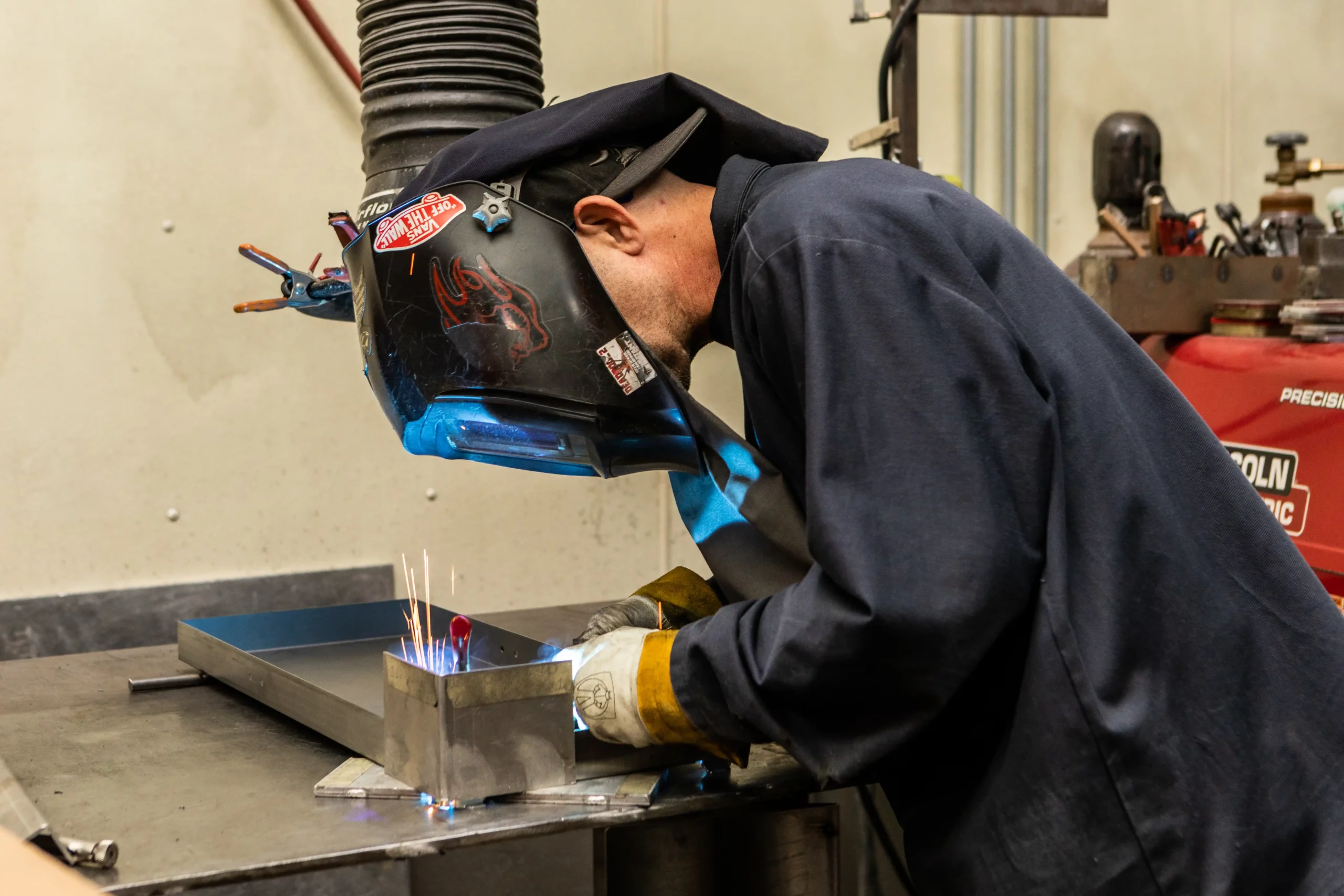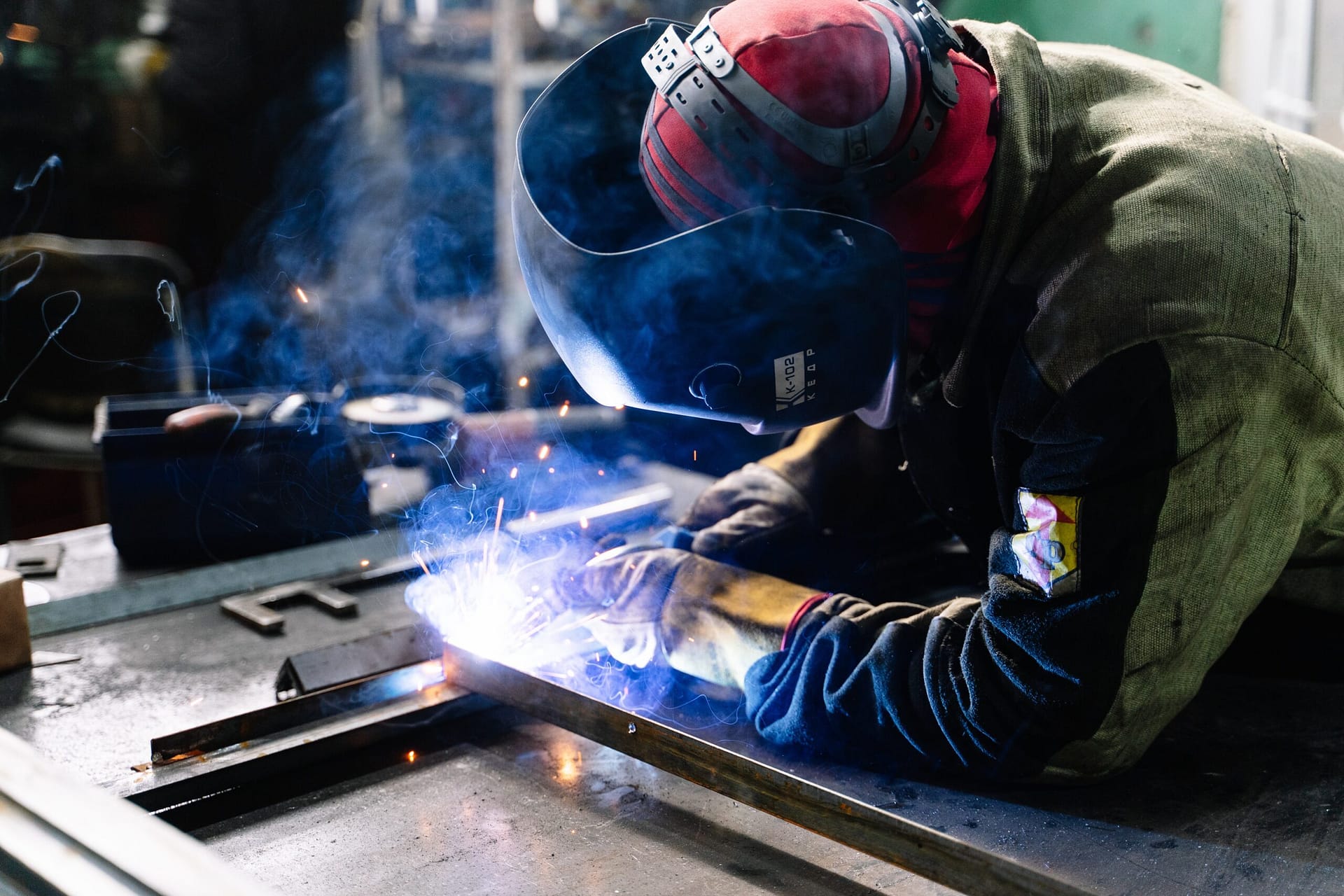Everything about Welding: Secret Insights Into Techniques and Ideal Practices for Success
Welding incorporates a selection of techniques, each suited for particular materials and applications. Comprehending these methods, such as GMAW, SMAW, and TIG, is vital for attaining ideal results. Moreover, the ideal devices and safety practices can not be overlooked. As preparation and repairing play critical duties in the welding procedure, understanding these components can considerably boost the quality of the end product. What are the key variables that assure an effective weld?
Comprehending Different Welding Methods
Welding techniques encompass a range of approaches, each suited to specific applications and products. Amongst the most common methods are Gas Steel Arc Welding (GMAW), Secured Metal Arc Welding (SMAW), and Tungsten Inert Gas Welding (TIG) GMAW, also called MIG welding, is popular for its speed and convenience, making it ideal for slim products. SMAW, or stick welding, is favored for its simpleness and effectiveness in outdoor settings, especially with thicker steels. TIG welding provides precision and control, making it ideal for complex job and non-ferrous metals (Montana Mobile Welding and Repair Belgrade). Each method has its special advantages and factors to consider, permitting welders to choose the best technique based upon the job's needs, product kind, and desired results. Understanding these strategies is necessary for successful welding
Essential Welding Equipment and Devices
While numerous welding methods need specific skills, the right devices and devices are just as important for achieving top quality results. Essential welding equipment includes welding devices, which differ relying on the technique-- such as MIG, TIG, or stick welding. Protective gear, consisting of gloves, headgears, and aprons, warranties safety and security and convenience throughout the process. Additionally, components and clamps assist secure materials in place, making certain precision in welds. Consumables like welding rods, cable, and securing gas are also essential parts that affect the high quality of the weld. Moreover, tools such as grinders and cutters promote surface area prep work and post-weld ending up, adding to a specialist end result. Buying high-grade tools ultimately improves the efficiency and effectiveness of welding jobs.
Security Practices in Welding
Correct safety methods are vital in the welding industry to safeguard employees from possible dangers. Welders should use appropriate individual protective tools (PPE), including headgears with proper shading, handwear covers, and flame-resistant garments. Sufficient ventilation is crucial to minimize direct exposure to hazardous fumes and gases generated throughout the welding procedure. In addition, employees should be learnt the right handling of welding devices to avoid mishaps. Fire safety procedures, such as maintaining flammable materials far from the welding location and having fire extinguishers easily offered, are necessary. Routine assessments of devices and offices can assist identify prospective threats before they cause crashes. By adhering to these safety and security techniques, welders can develop a safer working setting and lessen threats connected with their profession.
Readying Materials for Welding
Preparing materials for welding is a crucial action that substantially influences the top quality and stability of the end product (Montana Mobile Welding and Repair Welding). Correct prep work entails cleansing the surfaces to get rid of pollutants such as oil, corrosion, and dust, which can compromise the weld. Strategies such as grinding, sanding, or making use of solvents are generally utilized to attain a clean surface area. Additionally, making certain that the products fit with each other well is vital; spaces can result in weak welds. It's also vital to take into consideration the placement and positioning of the elements, as this will affect the ease of welding and the last end result. Picking the suitable filler material and guaranteeing compatibility with the base metals is crucial for accomplishing solid, durable welds.
Tips for Achieving High-Quality Welds
Attaining top notch welds calls for attention to detail and adherence to ideal practices throughout the welding process. Correct joint preparation is vital, guaranteeing surface areas are tidy and totally free from pollutants. Picking the suitable filler product and welding technique based on the base steels is essential for ideal bonding. Preserving constant travel rate and angle while welding can protect against problems and advertise uniformity. In addition, regulating warm input is vital; too much warm can bring about bending and weakened joints. If needed, consistently evaluating the welds during the procedure allows for prompt changes. Employing ideal post-weld therapies, such as cleansing and tension relief, can enhance the sturdiness and integrity of the weld, inevitably making certain a successful end result.
Repairing Usual Welding Issues
Welding commonly offers obstacles that can impact the high quality and stability of the end product. Common concerns such as porosity, inconsistent weld beads, and getting too hot can develop, each requiring particular troubleshooting methods. Understanding these problems is essential for welders to improve their skills and achieve optimal Website results.
Porosity Troubles Described
Although porosity can often be ignored, it stays a vital issue in welding that can compromise the stability of an ended up item. Porosity refers to the existence of small gas pockets within the weld bead, which can lead and compromise the joint to premature failing. This problem commonly emerges from pollutants, wetness, or incorrect protecting gas coverage during the welding procedure. To mitigate porosity, welders ought to confirm that the base materials are clean and completely dry, use appropriate securing gases, and maintain consistent welding criteria. On a regular basis evaluating the equipment and environment can also aid identify prospective concerns before they materialize in the weld. Addressing porosity efficiently is crucial for accomplishing strong, durable welds that fulfill high quality criteria.

Irregular Weld Beads
Inconsistent weld grains can significantly influence the top quality and stamina of a finished item. Various aspects contribute to this problem, consisting of inappropriate travel speed, inaccurate amperage settings, and inconsistent electrode angles. When the welder moves also quickly, a grain might appear narrow and lack infiltration, while moving also gradually can trigger too much build-up. In addition, using the incorrect amperage can lead to either damaging or extreme spatter, both of which concession weld honesty. The welder's technique, such as inconsistent torch motion, can additionally result in uneven grain look. To alleviate these issues, welders need to concentrate on maintaining consistent, controlled movements and making sure appropriate tools settings to attain uniformity in their welds. Consistency is key to achieving reputable and strong welds.
Overheating and Bending Issues
Excessive warm throughout the welding process can cause substantial getting too hot and buckling issues, influencing the architectural integrity of the workpiece. These issues often materialize as distortion, which can jeopardize placement and visit their website fit-up, making more assembly challenging. Factors adding to overheating include the choice of welding specifications, such as voltage and take a trip rate, in addition to the kind of material being bonded. To alleviate these concerns, welders should maintain consistent travel rate and suitable heat input while keeping track of the workpiece temperature. Furthermore, pre-heating or post-weld warmth treatment click site can aid reduce anxieties created by rapid air conditioning - Welding. Regular assessment and adherence to ideal methods are necessary in preventing getting too hot and ensuring the longevity and integrity of bonded structures
Regularly Asked Concerns
What Are the Profession Opportunities in the Welding Market?
The welding market offers varied occupation chances, consisting of placements as welders, designers, teachers, and assessors. Specialists can function in manufacturing, building and construction, aerospace, and vehicle industries, gaining from solid demand and competitive salaries in numerous roles.
How Can I Boost My Welding Speed Without Compromising Top Quality?
To boost welding rate without giving up quality, one must practice efficient techniques, keep equipment, maximize setups, and enhance hand-eye control. Normal training and seeking comments can likewise greatly add to attaining much faster, premium welds.
What Qualifications Are Available for Welders?
Various qualifications exist for welders, including those from the American Welding Society (AWS), the National Center for Building Education And Learning and Research Study (NCCER), and numerous industry-specific organizations. These qualifications improve employability and demonstrate skill proficiency.
Exactly How Does Welding Affect the Residences of Metals?
Welding affects the buildings of steels by changing their microstructure, which can lead to changes in stamina, firmness, and ductility. Warmth input and cooling prices during the procedure significantly affect these product attributes.
Can I Weld Dissimilar Metals With Each Other?
